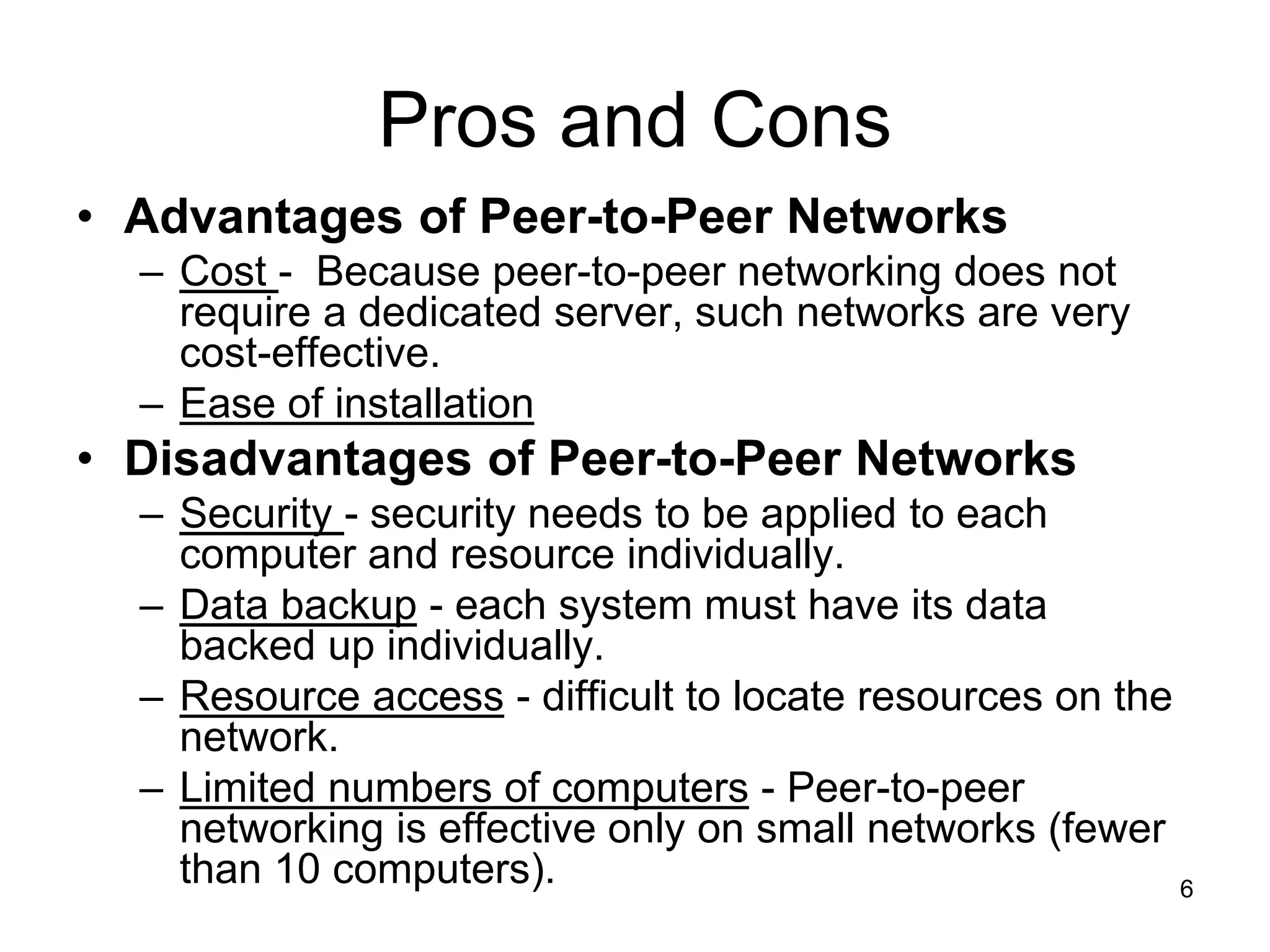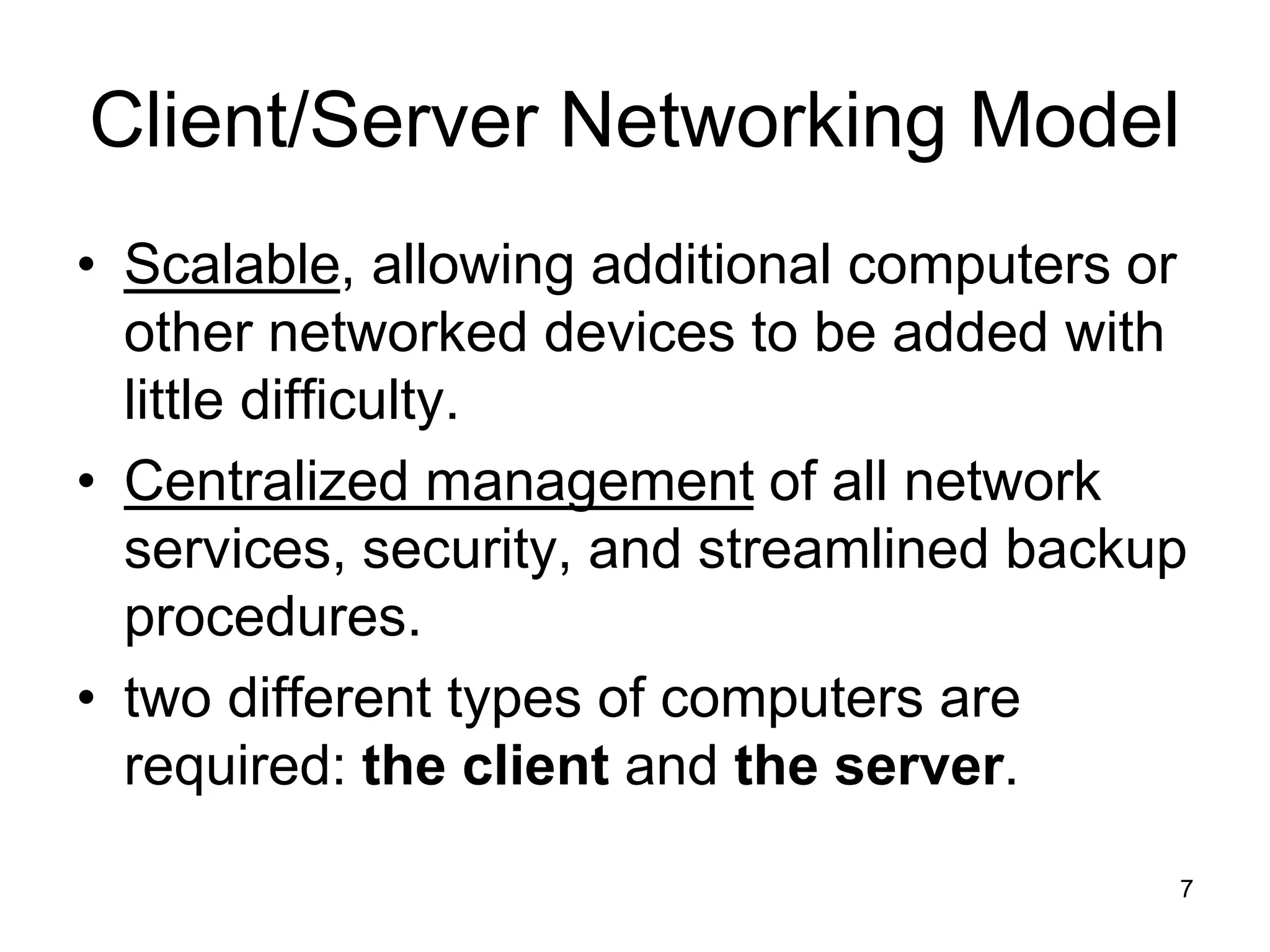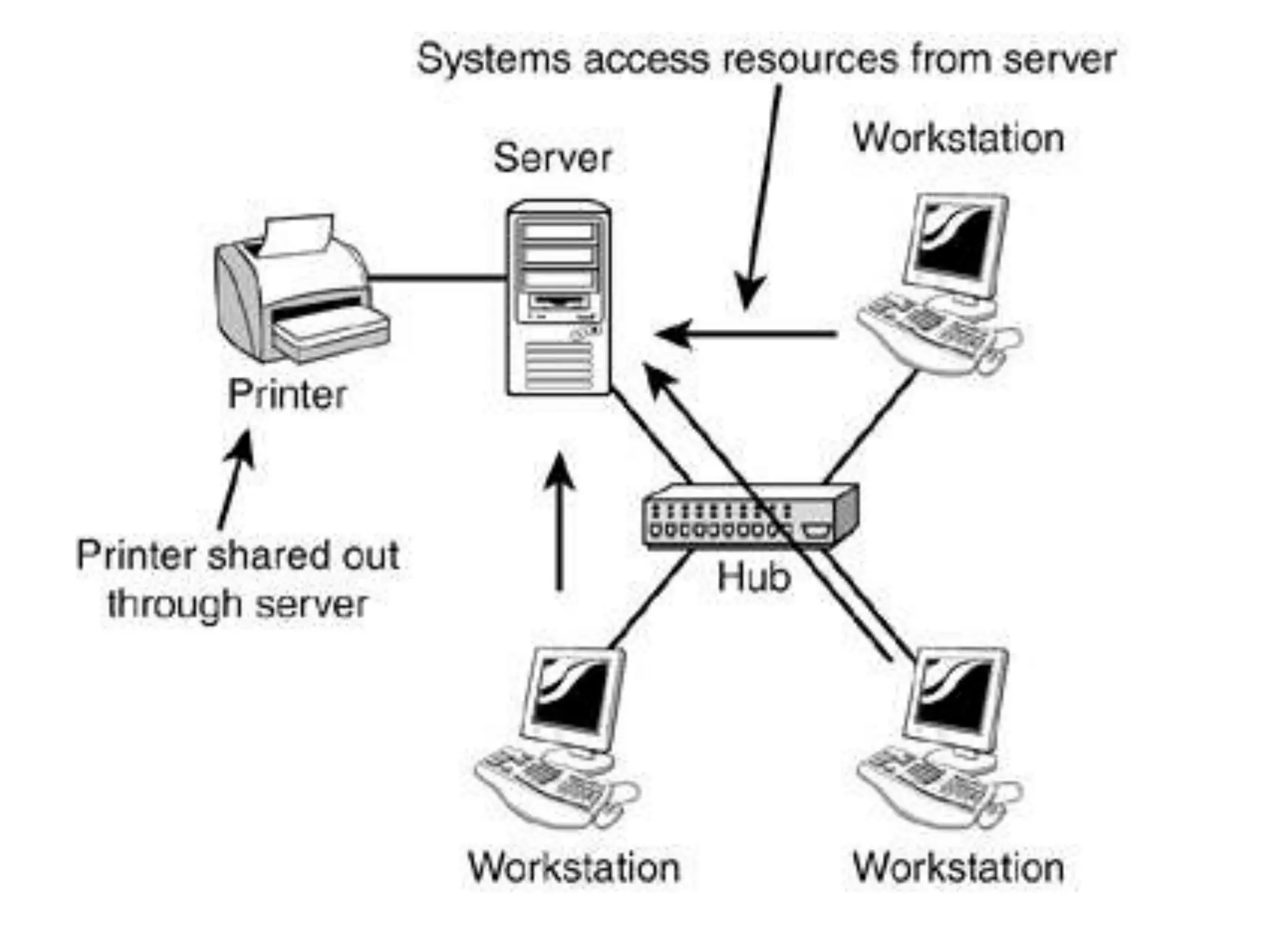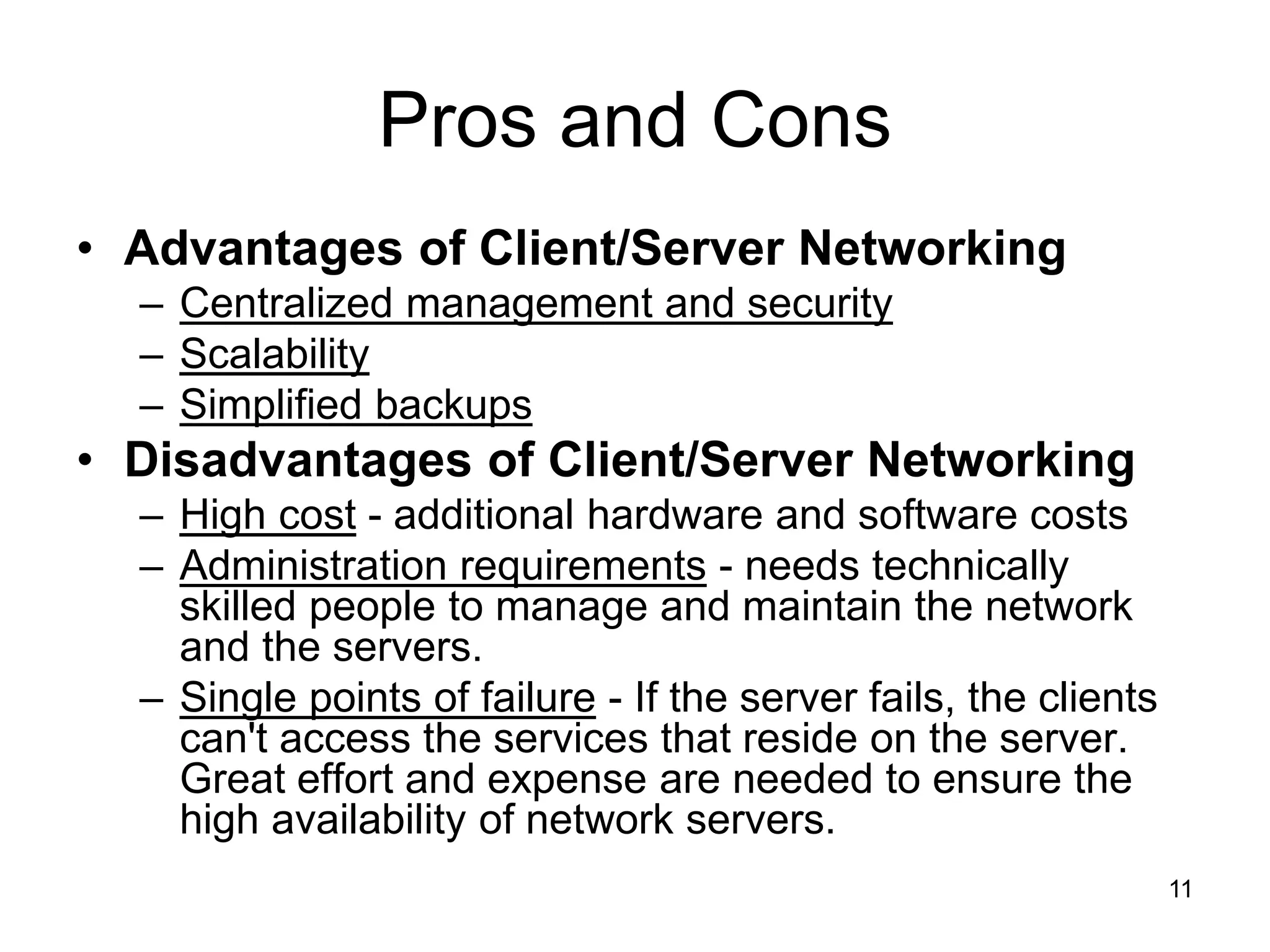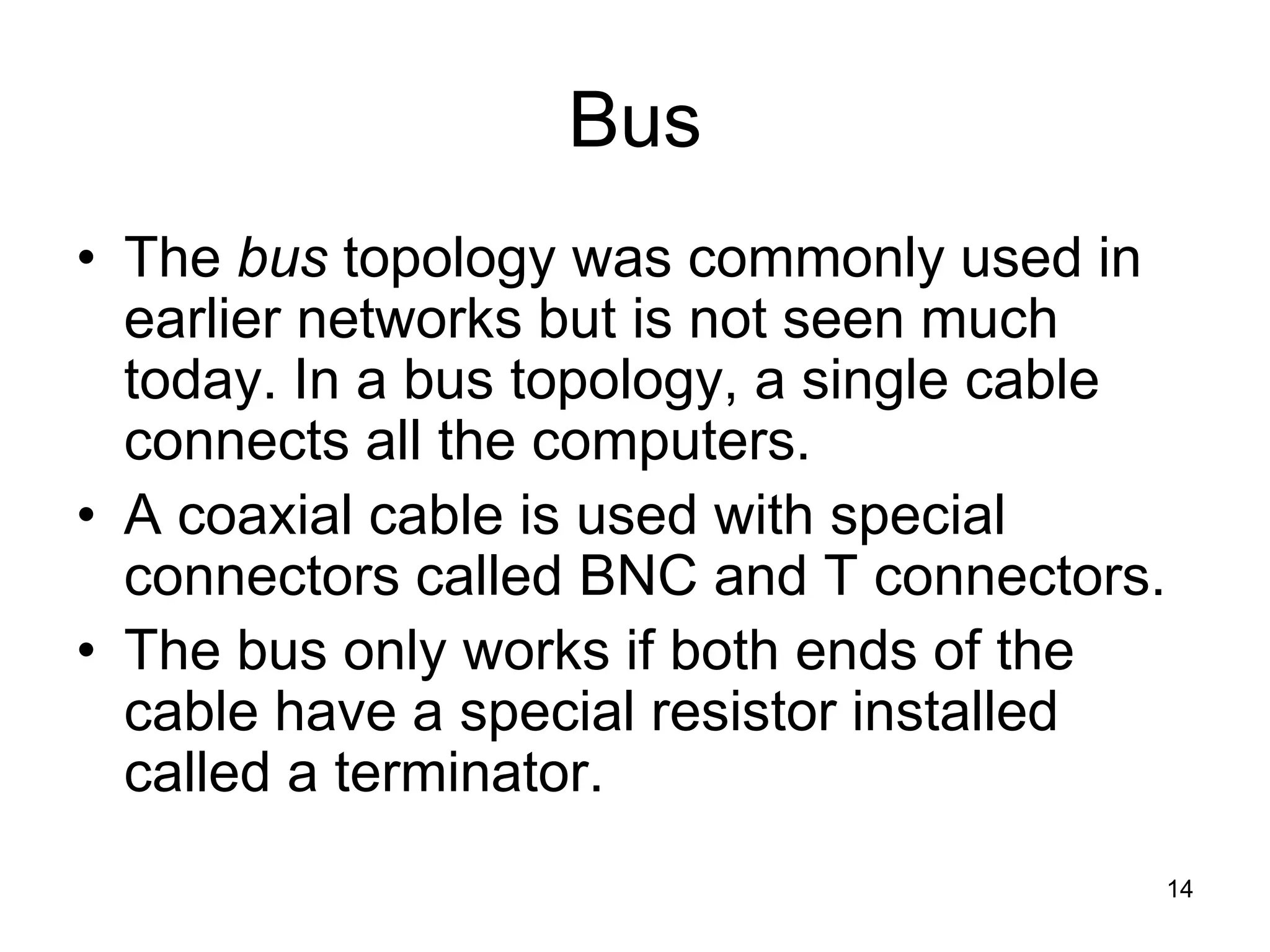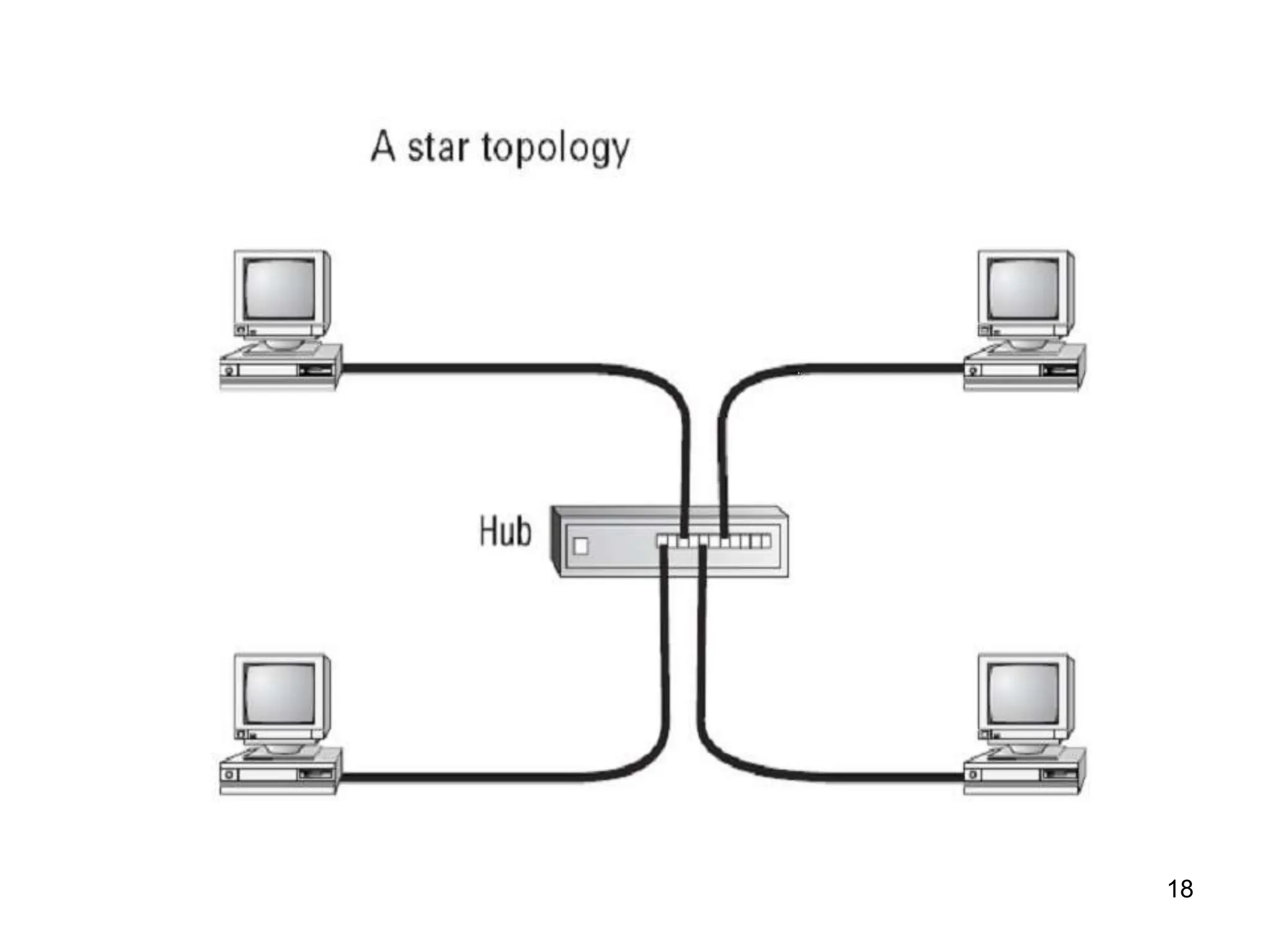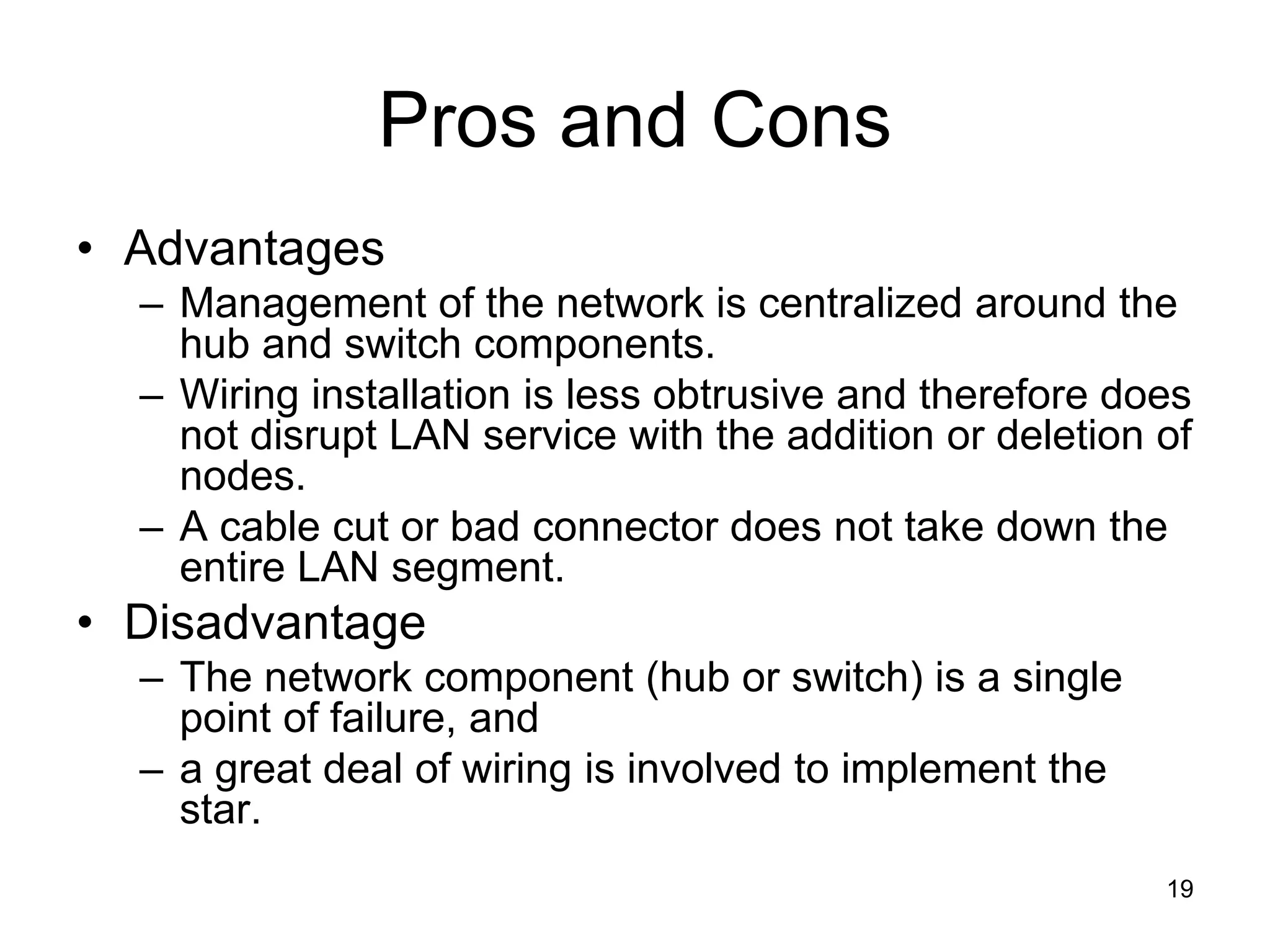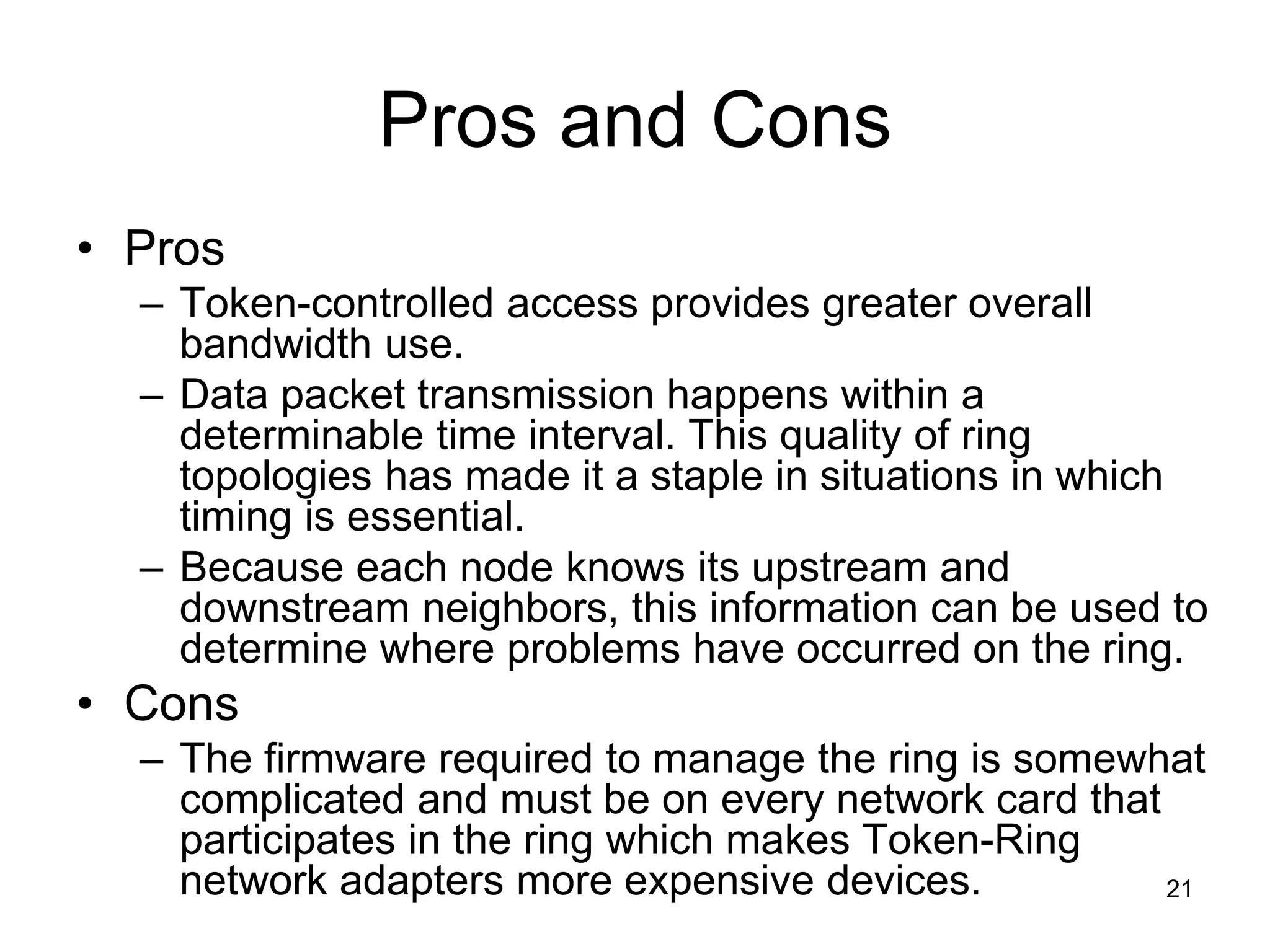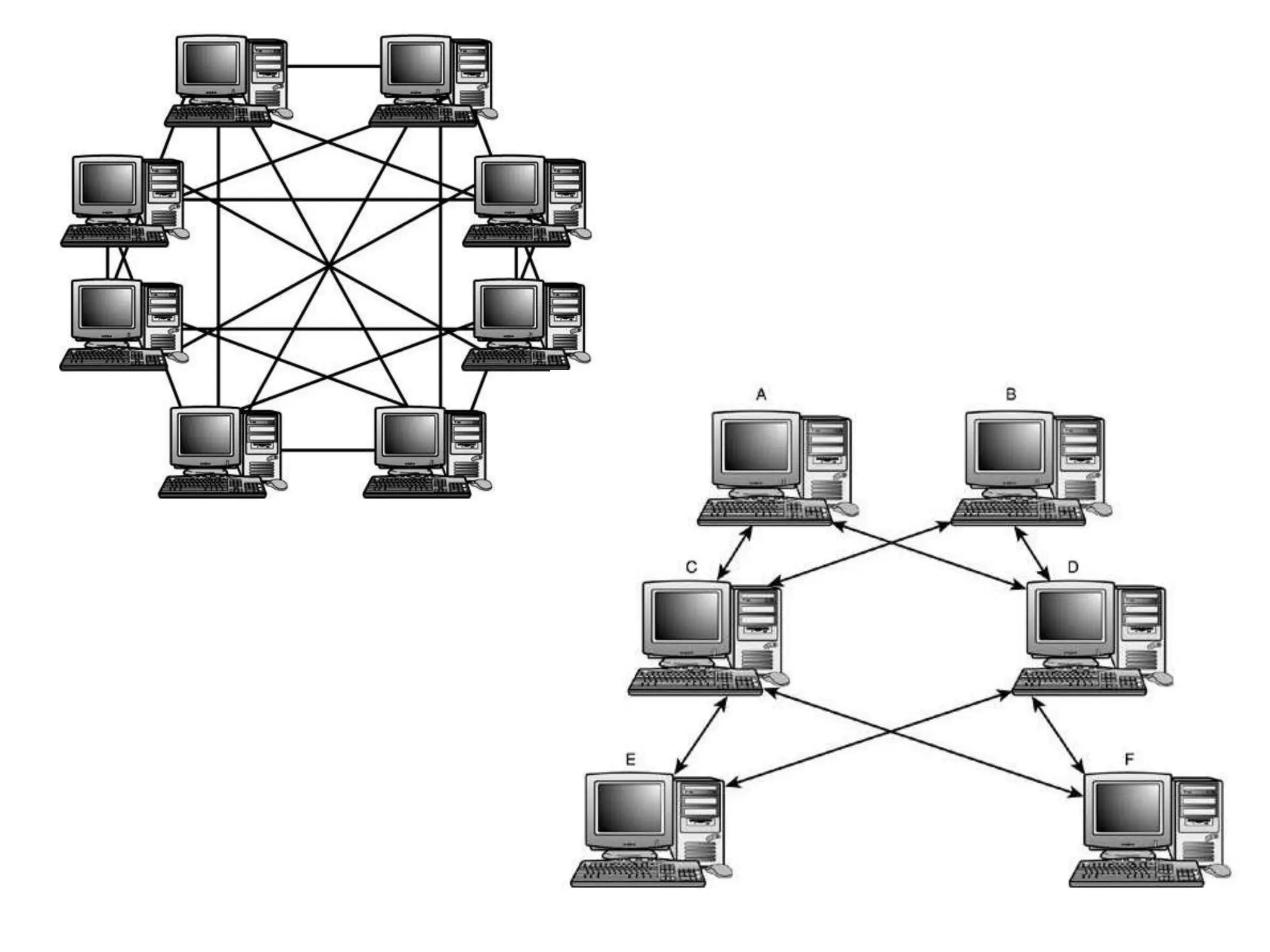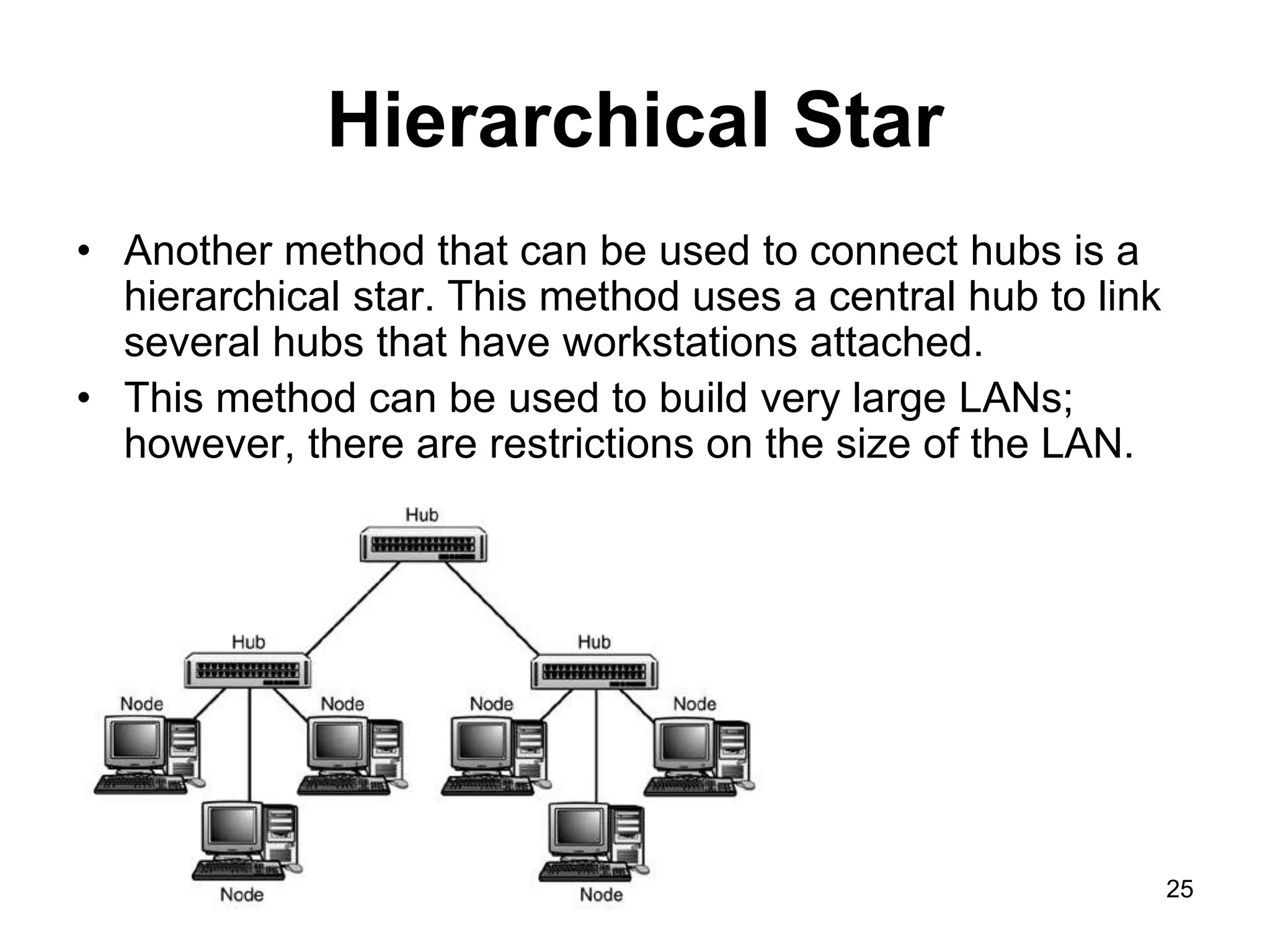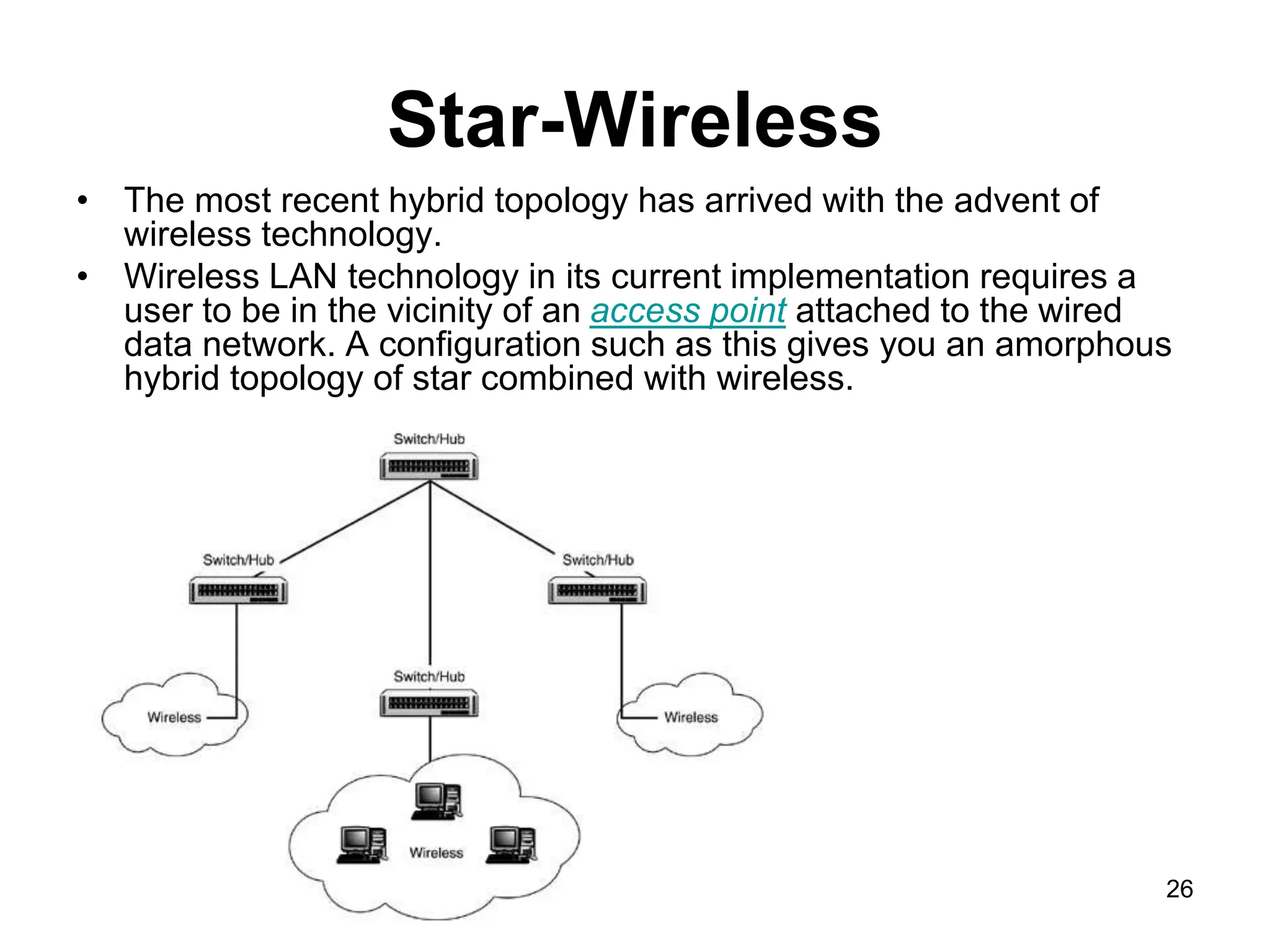1. There are several common network topologies including bus, star, ring, mesh, and hybrid topologies. The bus topology uses a single cable to connect all devices but has single point of failure issues.
2. The star topology is now very common, with devices connecting to a central hub or switch. It offers easier management but the hub/switch is a single point of failure.
3. Ring topologies provide better bandwidth use but require more complex firmware. Mesh topologies provide redundancy through multiple connections but a full mesh is impractical for large networks. Hybrid topologies combine features to address issues.





